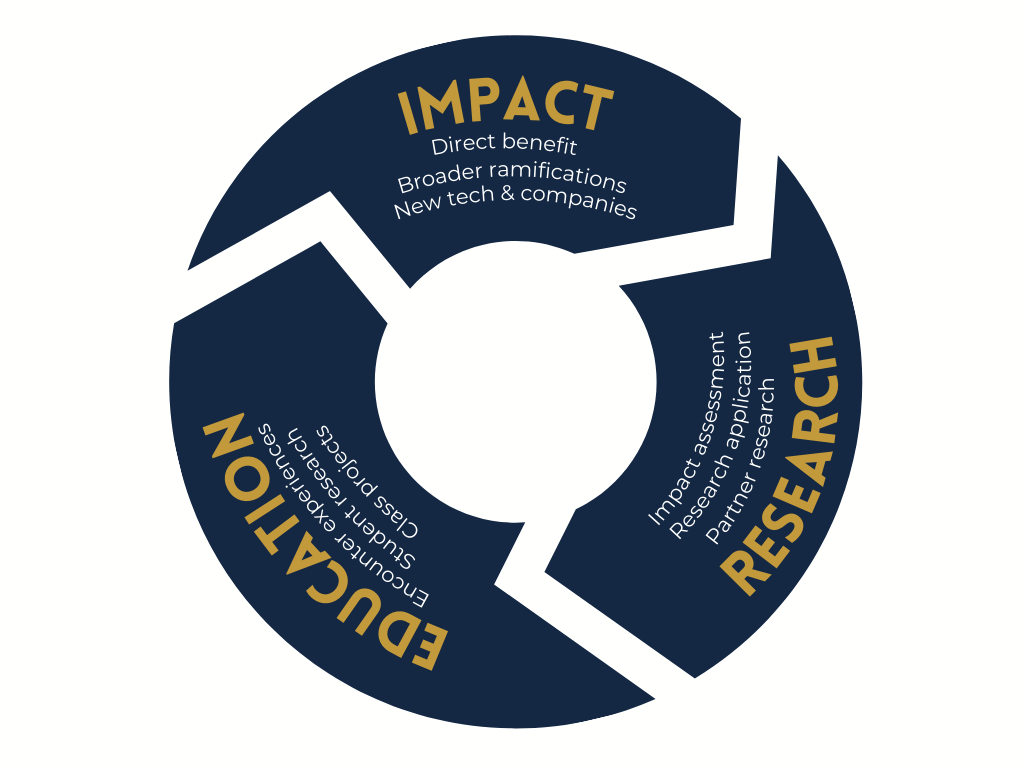Research
MIN is located in the IDEA Center, Notre Dame’s tech transfer and innovation hub, where research moves from lab to market. But in MIN it also becomes a place where academic research and theory with practical relevance can find immediate empirical testing – and where successful experiments with huge impact potential can scale directly from pilots.
Creating impact is what grounds MIN. But research is necessary to inform, shape, and target that impact. This is why MIN seeks to partner with campus research centers like FIRE, LEO, Keough, the Center for Social Concerns, the Lucy Family Institute, and others. These centers and their experts bring rigor, insight, and experience to the development of potential solutions in the relevant spaces.
But MIN itself can also be a rare venue for empirical research, and for broader implementation of successful experiments. Unlike most academic centers, we are primed to rapidly constitute projects, recruit networks and operators, and test ideas and solutions in the real world. We can undertake low-risk small-scale pilot projects with targeted and measured impact metrics, and assess, tweak, and scale up what works. This approach leverages the arena that the MIN network creates to generate broader, longer-term, impact.
Because MIN projects always begin with an initial level of market and needs assessment, we support a “laddering-up” of research opportunities that begins with exploratory or student-led research projects, and escalates to graduate-level or faculty-led quantitative or qualitative research.

The overall MIN model could be seen as a microcosm of the University, encompassing education, research, and impact. But MIN is distinguished by its deeply collaborative network approach and by its primary goal of immediate impact via scalable digital technology and the nimble business and funding models associated with it.
In other words, we use the technology not just to address the need but as the seed for a network; and we use the network as a forum for both research and education.
This forms an iterating, reinforcing cycle, wherein research and education activities also broaden the network and help uncover additional possibilities for technology-enabled solutions.